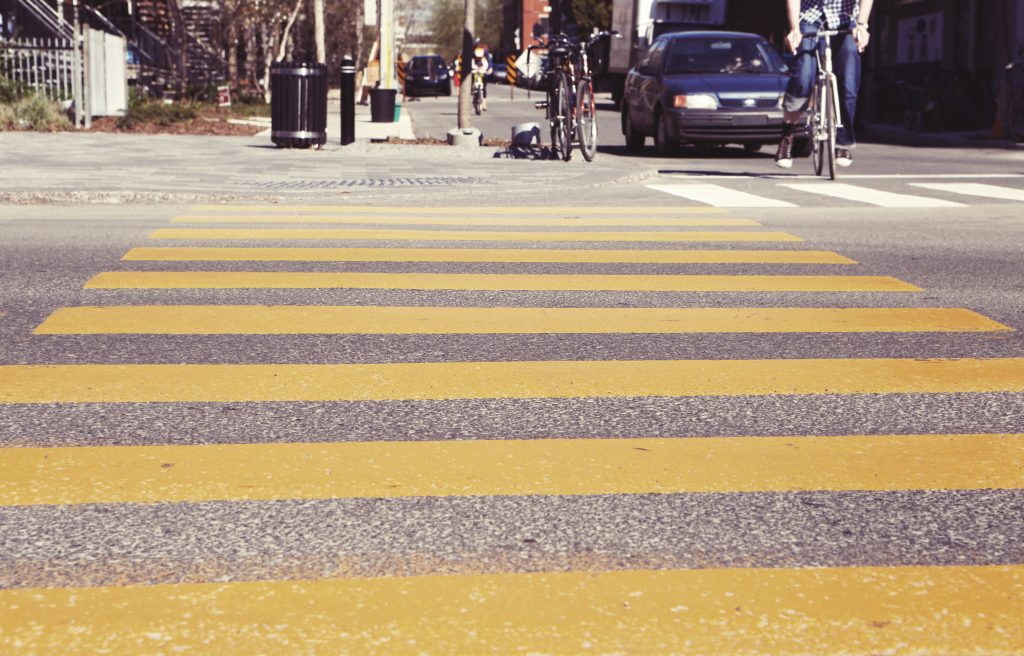 People often assume that pedestrians always have the right of way. While this adage is partially true, pedestrians who avoid proper safety protocols can be found more at fault for an injury than the car that struck them. If avoiding physical trauma is not motivation enough to look both ways before crossing the street, the following lawsuit may encourage you to take proactive steps to avoid being hit.
People often assume that pedestrians always have the right of way. While this adage is partially true, pedestrians who avoid proper safety protocols can be found more at fault for an injury than the car that struck them. If avoiding physical trauma is not motivation enough to look both ways before crossing the street, the following lawsuit may encourage you to take proactive steps to avoid being hit.
Wilson Jolivette was walking on a service road near Louisiana Highway 90 when he was struck by a passing truck driven by Ray Hebert. Hebert was employed by Hanagriff’s Machine Shop and was driving a large flatbed truck owned by the Shop. Jolivette broke both his wrist and ankle due to the collision. Hebert’s driver’s license documents partial vision loss in one eye, and he testified that he did not see Jolivette walking on the road.
Witnesses to the events described Jolivette walking into the road, being struck by the truck’s side mirror, and spinning into the air. Jolivette admitted that he did not look both ways before crossing the service road and consequently did not see the truck coming. Jolivette sued the Shop for medical expenses, pain and suffering, and loss of earnings. The jury found him 70% at fault for the accident and the Shop at fault for the other 30%. The jury also awarded Jolivette $10,000 for pain and suffering and other awards. Both parties appealed their assignments of fault. Jolivette appealed the $10,000 ruling.
In Louisiana, a pedestrian must watch for nearby traffic when crossing a road. Miller v. Bailey. Further, a pedestrian must yield to all vehicles when crossing where a marked crosswalk does not exist. La. R.S. 23:213. A driver is always required to use due care to avoid collisions regardless of signage. La. R.S. 32:214. On review, a court’s allocation of fault is overruled only if there is manifest error/clear wrong. Lobell v. Rosenberg. When reviewing the amount of awarded damages, the court may only overrule if there is an abuse of discretion. Coco v. Winston Indus., Inc.
The Court reviewed the facts and found that the jury did not manifestly error in allocating fault between Jolivette and the Shop. Both parties were somewhat at fault; Hebert should have slowed down, and Jolivette should have been looking both ways. However, the jury was not clearly wrong in its decision to hold Jolivette 70% at fault. Conversely, the Court found that the pain and suffering damages were an abuse of discretion by the lower court. The Court raised the award from $10,000 to $36,000, citing the original amount as “abusively low.”
We can all agree that pedestrian safety is the responsibility of every person on the road, whether in a motor vehicle or not. As demonstrated by the case above, a jury may decide damages in any given pedestrian injury lawsuit. Luckily, if the jury’s award is particularly egregious, the reviewing court can adjust the award on appeal. Regardless, remember to look both ways before you cross the street.
Additional Sources: JOLIVETTE V. HEBERT
Written by Berniard Law Firm Blog Writer: Corrinne Yoder-MulkeyAdditional Berniard Law Firm Articles on Allocation of Fault: Damages Awarded by Jury “Shocked the Conscience,” Louisiana Appellate Court Increases Award by $18,500
 Louisiana Personal Injury Lawyer Blog
Louisiana Personal Injury Lawyer Blog

